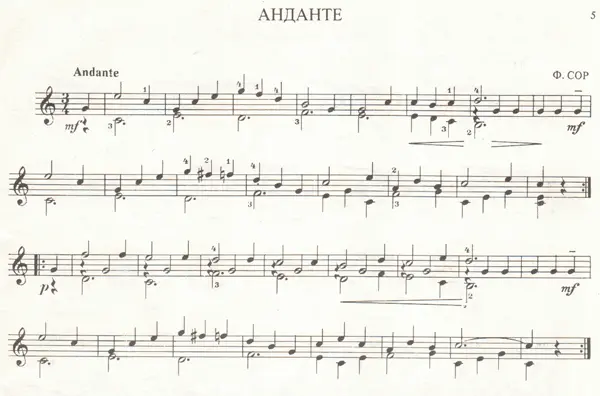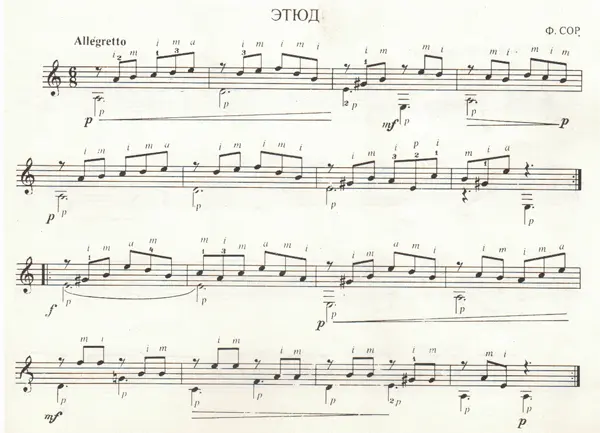
“Andante” F. Sor, sheet music for beginners
“Tutorial” Guitar Lesson No. 14
This 14th lesson touches upon such a simple topic as a tying league. The league is indicated by an upward or downward curved arc . A tie links notes of the same pitch, making them one note of continuous duration. To put it simply, there is one strike on the string, and the sound, without interruption, lasts based on the total sum of the duration of the notes. Below is an example of writing tie leagues and scores.
Using the example of the play “Andante” by the Spanish guitarist and composer F. Sora, let’s get acquainted with this topic in practice. The tie here is the last two bars of the piece. With a three-quarter time, two notes (do) connected by a league will sound – one, two, three, one. Try to play “Andante” following the indicated fingering. Don’t forget about the tonal gradations in the piece (quiet to loud, etc.) this will give your performance a certain variety that is needed in music. The name of the piece “Andante” is the designation of the musical tempo. Translated from Italian, “Andante” – walking step from the word “Andare” – to go. On the metronome, the “Andante” tempo is indicated as a non-fast tempo from 58 to 72 beats per minute.


Fernando Sor “Andante” Video
Before moving on to the next lesson, I think it would be useful to play Etude in A Minor by F. Sor. The main condition for this part of the lesson is to continue mastering the sound extraction on the guitar using the “apoyando” (with support) technique. This topic has already been touched upon in the 11th lesson and this Etude will be a good practical one for mastering such sound extraction. A blow with the finger of the right hand when receiving “apoyando” is as follows. The finger, as if stroking (for example, the first) string in the direction of the neighboring one, jumps from it to this (second) neighboring string and stops on it, having found support there, while a dense deep sound of the first string arises. Exactly the same picture occurs with bass strings – for example, a finger, having made a sound on the sixth string, stops on the fifth string, while the sixth string produces a dense sound rich in overtones. When playing an etude, do not forget about the dynamic hues marked under the musical strings.


PREVIOUS LESSON #13 NEXT LESSON #15





